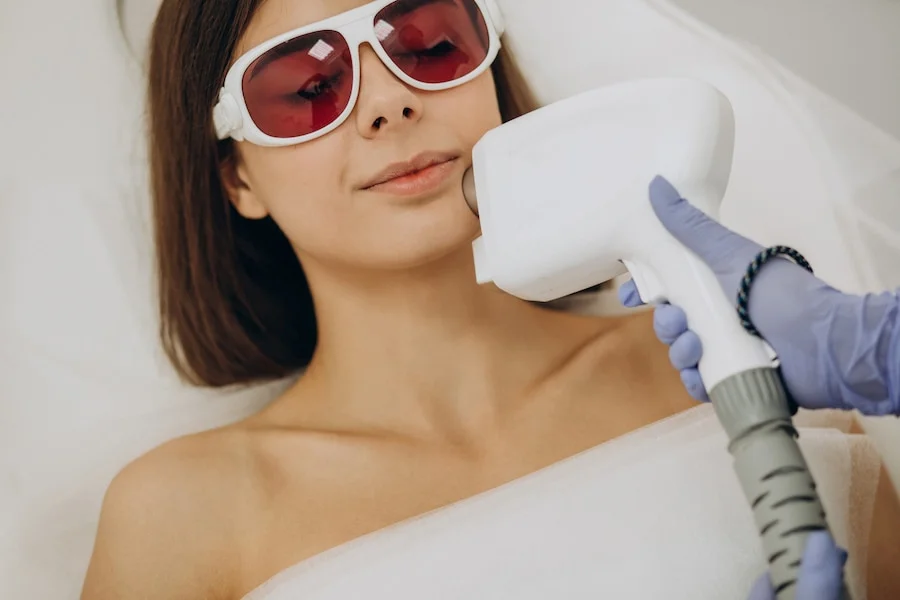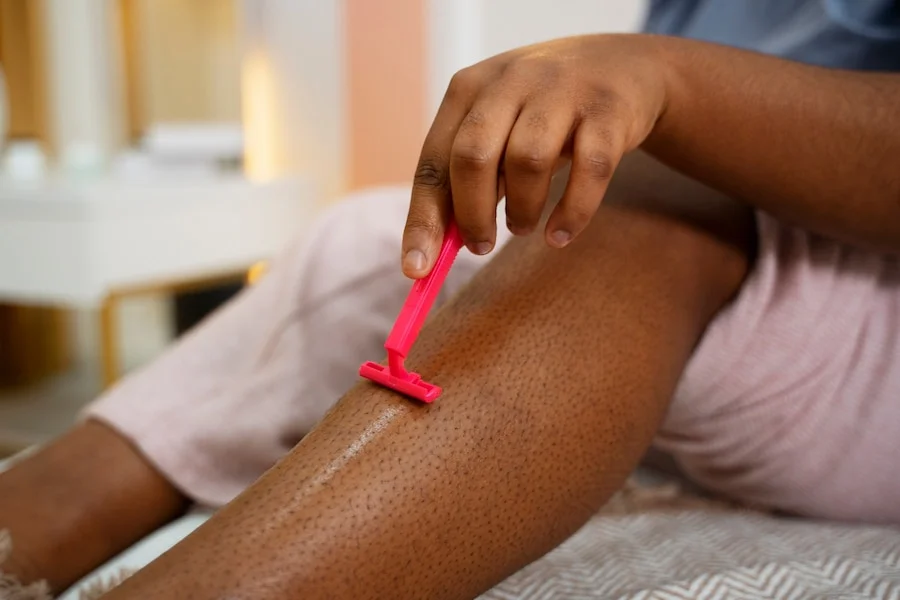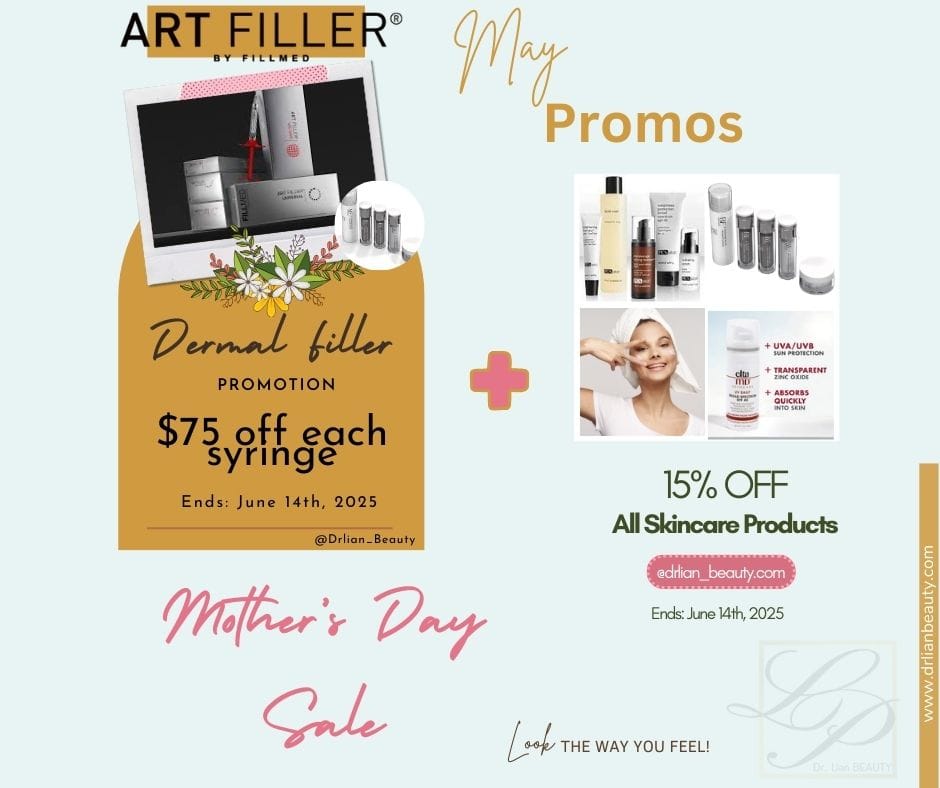Dermal Fillers. You’ve probably come across these products before. From tackling wrinkles to boosting lip volume, dermal fillers offer many benefits.
But are they the right choice for you – Are dermal fillers safe?
In this article, we’ll thoroughly explore the ins and outs of dermal fillers and how safe they really are.
Table of Contents
ToggleQuick Takeaway
- Dermal fillers are injectable substances used to add volume and treat various cosmetic concerns.
- They’ve gained popularity for enhancing facial aesthetics and addressing wrinkles, folds, and volume loss.
- Common uses include smoothing wrinkles, plumping lips, correcting facial asymmetry, and treating scars.
- Types of fillers include (but are not limited to) hyaluronic acid (HA), calcium hydroxylapatite, poly-l-lactic acid PLLA, and autologous fat grafting.
- Pre-procedure consultation and aftercare play key roles in a successful treatment.
- Temporary side effects like bruising and swelling are normal and manageable.
- The results of dermal fillers typically last 6-12 months, but this varies.
- Safety advantages include minimally invasive procedures, quick recovery, and reversibility.
- Factors influencing safety include filler type, expert administration, technique, and individual factors.
- Hyaluronic acid fillers are popular due to their natural origin, reversibility, and relatively painless process.
- Risks of infection, allergic reactions, filler lumps, nodules, loss of feeling, and vascular occlusion are possible, but rare.
Dermal Fillers: What They Are and Their Use
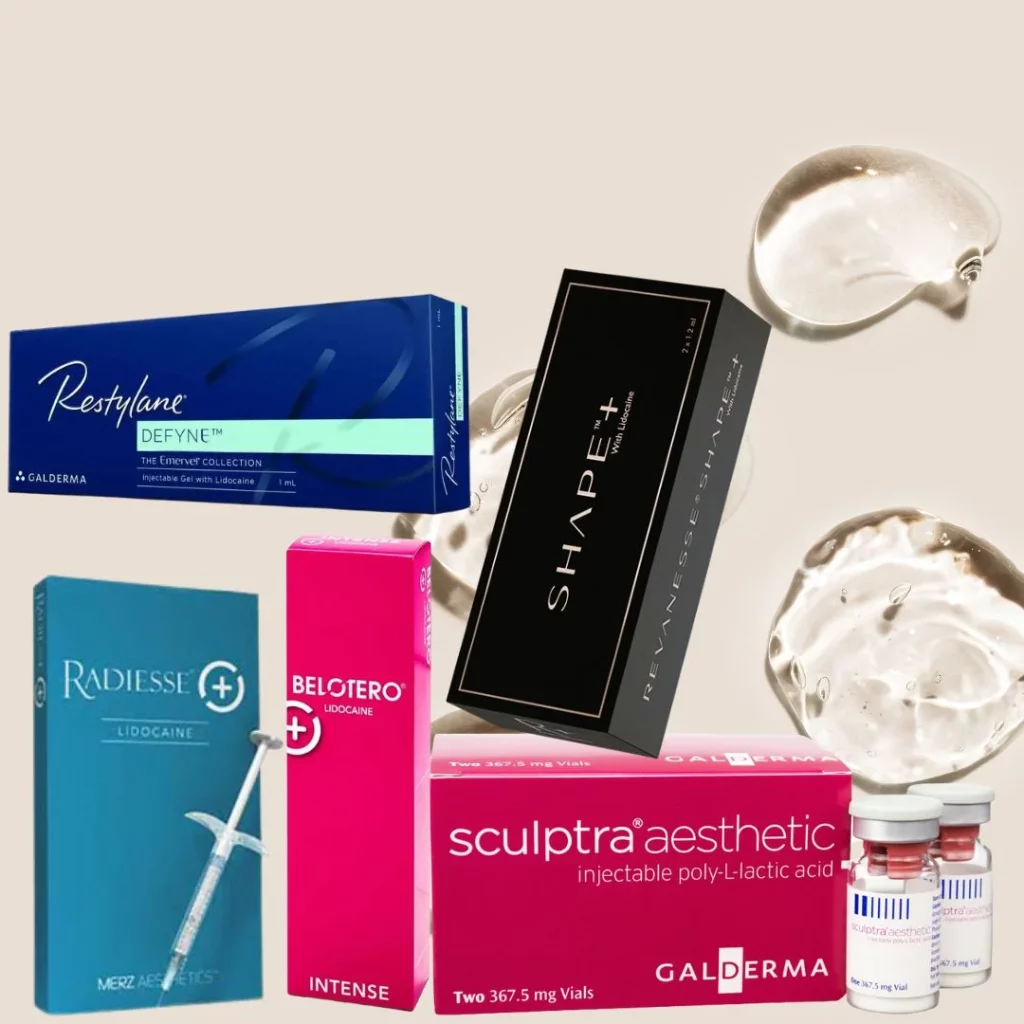
Dermal fillers are substances that are injected into the skin to give it a fuller appearance. They are used to treat a variety of cosmetic concerns, such as wrinkles, folds, and loss of facial volume.
Dermal fillers are also used to plump up the lips, cheeks, buttocks, and even the labia majora. Also, they come in a variety of types, each with specific properties and benefits.
The best type of dermal filler for you will depend on your individual needs, budget, and goals.
Dermal fillers have become a popular choice for enhancing facial aesthetics and achieving a more youthful appearance.
This versatile cosmetic treatment offers a range of benefits, helping to address various concerns and imperfections.
Here are some of the most common reasons why dermal fillers are used:
Filling in Wrinkles
One of the primary uses of dermal fillers is to smooth out wrinkles and fine lines on the face.
These injections are effective in reducing the appearance of nasolabial folds (smile lines) and marionette lines (lines extending from the corners of the mouth to the chin).
By carefully injecting fillers into these areas, a smoother and more youthful appearance can be achieved.
Adding Volume to the Lips
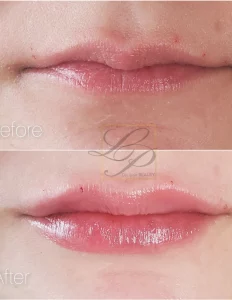
One of the most popular uses of dermal fillers is to enhance lip volume, creating a fuller, more defined, and alluring pout.
Whether seeking a subtle or more pronounced enhancement, fillers can provide the desired level of plumpness for the lips, resulting in a natural and appealing look at any age.
Correcting Facial Asymmetry
Facial symmetry plays a crucial role in overall attractiveness, and dermal fillers offer a solution for addressing facial asymmetry.
Whether it’s a droopy eyelid or a sunken cheek, skilled practitioners can use fillers to restore balance and harmony to the facial features, enhancing your natural beauty.
Restoring Lost Volume
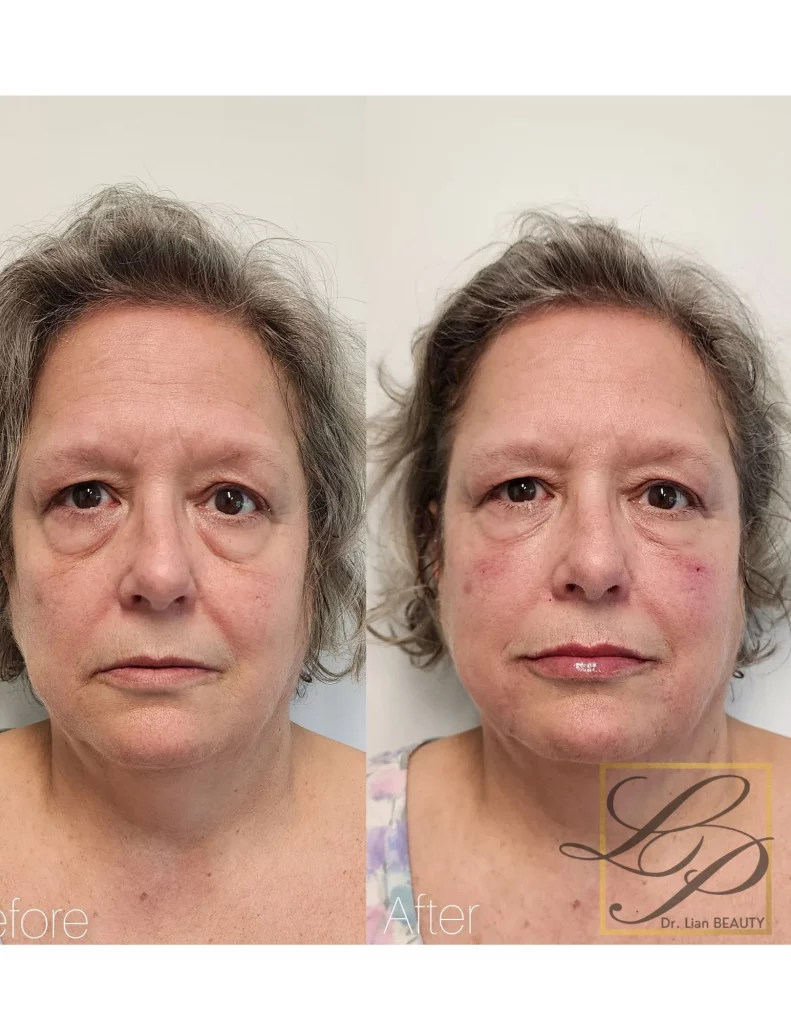
As we age, the face may lose volume from thinning bone, muscle, and shifting fat. This can result in a tired or sunken appearance.
Dermal fillers are exceptional tools for replenishing this lost volume, particularly in areas like the cheeks and temples.
By choosing the correct dermal filler, gently adding filler to these regions can restore one’s facial structure, resulting in a rejuvenated and more vibrant appearance.
Treating Scars
Dermal fillers have also found success in the treatment of scars, including those caused by acne or surgery.
By carefully injecting fillers into depressed scars, they can be elevated to the level of surrounding skin, creating a smoother and more even texture.
How common are dermal fillers?
Dermal fillers are most commonly used by women, but they are also becoming more popular with men.
In Canada, the most used dermal fillers are made from hyaluronic acid (HA). There are more than 30 HA-based fillers available for sale here.
These fillers can last around six months to a year, depending on things like your skin’s age, how much correction is needed, the type of filler used, and your body’s metabolism.
However, it is important to do your research before getting dermal fillers to make sure you choose a skilled and experienced professional.
What are the types of dermal fillers?
There are many different types of dermal fillers available in Canada, each with its own unique properties and benefits.
The dermal fillers that are commonly used are: Hyaluronic Acid, Calcium Hydroxylapatite, and Poly-L-Lactic Acid
Let’s discuss them further.
Hyaluronic acid (HA) fillers
Hyaluronic acid is a natural substance that keeps the skin hydrated and plump, making it a widely favored dermal filler option that most people tolerate well.
These fillers are versatile, smoothing wrinkles, enhancing lip volume, and refining facial contours.
Generally, the effects of HA fillers stay for 6-12 months, occasionally extending up to 2 years in certain cases.
Additionally, hyaluronic acid-based fillers are the only types that can be reversed with an enzyme called hyaluronidase. Other types of fillers mentioned will break down over time.
Calcium hydroxylapatite fillers
Injectable calcium hydroxylapatite is known commercially as Radiesse. Calcium hydroxylapatite is a biocompatible filler in that it is similar to bone.
Calcium hydroxylapatite fillers are more durable than hyaluronic acid fillers, and they can last 12 to 18 months.
They are often used to restore bone like the jawline, fill in deep wrinkles and folds, and restore volume to the face.
The fact that the effects of calcium hydroxylapatite are both immediate and ongoing is one of its main benefits.
As a bio-stimulatory dermal filler, it stimulates the body to produce endogenous collagen, which in turn helps to create a new skin matrix.
When hyper dilute, calcium hydroxylapatite is ideal for treating “tech neck” (necklace lines), and crepey skin around the neck and decollete.
Calcium hydroxylapatite fillers are more expensive than hyaluronic acid-based fillers and are not approved for use around the mouth or under the eyes due to the risk of nodule formation.
Poly-L-Lactic Acid (PLLA) fillers
Sculptra is the brand name for injectable poly-l-lactic acid (PLLA). PLLA is also known as a bio-stimulatory dermal filler; this means it stimulates your own body to produce new collagen.
It is used to create structure, framework, and volume for the face and other body parts such as the labia majora and buttocks.
Once injected, the initial volume seen disappears within days and your body breaks down PLLA into water and carbon dioxide over time.
As a bio-stimulator, the effects of PLLA appear gradually over a few months, producing natural results and can last around 24 months.
PLLA is a great option for someone who isn’t in a hurry, doesn’t like the idea of foreign products remaining in them, and wants a pan facial rejuvenation that will provide natural and long-lasting results.
PLLA is more pricey than hyaluronic acid-based fillers and can not be used too close to the mouth or eyes.
Autologous fat grafting
Autologous fat grafting involves transferring fat from one body area to another, commonly used for facial volume and wrinkle filling.
While effective and safe, it’s more invasive than typical dermal fillers. Results can last years, but not always permanently as the body can reabsorb the transferred fat cells over time.
What happens before a dermal filler procedure?

Before your dermal filler procedure, meet with the doctor to discuss your goals for the procedure and to answer any questions you have.
Your physician injector will review your medical history, perform a physical exam and review the treatment plan.
Your injecting doctor may ask that blood thinners (such as aspirin, ibuprofen, and certain herbal medications) be stopped two weeks prior to injection.
As long as there is no active skin infection, then the procedure can happen the same day.
What happens during a dermal filler procedure?
Usually, the procedure takes around 30 minutes to an hour. Here at our clinic, we follow these steps:
- Assessing skin and discussing procedure goals.
- Cleaning the injection area.
- Numbing the injection area with local or topical anesthetic.
- Injecting filler using a fine needle or cannula.
- Gently massaging for even filler distribution.
- Giving post-procedure skin care instructions.
After the treatment, you might experience temporary side effects such as bruising, swelling, or redness. These are usual reactions and there’s no need for concern.
What happens after a dermal filler procedure?
Following a dermal filler procedure, you might experience temporary, mild side effects, including:
Bruising:
Bruising is a common occurrence post dermal filler treatments and typically resolves within a few days.
Swelling:
Similar to bruising, swelling is common but transient after dermal filler procedures.
Redness:
Redness is another short-lived side effect, usually subsiding within a few days.
Pain:
Although less frequent, mild pain might be experienced, which can be alleviated using over-the-counter pain medication.
Pro Tip – To help prevent bruising and swelling, it’s best to skip intense activities, avoid heat and limit alcohol intake for a few days after the procedure.
Your medical expert will give you clear aftercare directions to make sure you have a smooth recovery.
At Dr. Lian Beauty, Dr. Lian ensures that her patients receive aftercare guidance and regular follow-up sessions.
Here are additional tips for taking care of your skin
- During the first 48 hours, use a cold compress for 20-minute periods to reduce swelling and bruising. Cold helps limit blood flow and numb the area for comfort.
- After 48 hours, switch to a warm compress to ease swelling. Warmth boosts blood flow and healing for damaged tissues.
- Be patient with any lumps, bumps, or asymmetry that may appear. Wait 2 weeks for fillers to settle before assessing results.
- To prevent irritation, avoid touching or rubbing the area. Massage will be demonstrated for PLLA filler.
- Bruising might occur post-treatment, usually improving in 7-10 days.
- Tenderness and swelling are common. Over-the-counter analgesics like Tylenol can help for the next 2-3 days.
- Use gentle cleansers and moisturizers, avoiding harsh products that could irritate the skin.
- After the procedure, you should stay out of the sun for at least a week. Apply sunscreen daily to preserve your results and avoid sun damage.
What results should I expect after dermal fillers?
The way dermal fillers work and the results they bring can differ depending on the specific filler used, the part of the body being treated, and how your body responds.
But, in most cases, people notice a clear improvement in how wrinkles, folds, and scars appear. Lip fillers also do a great job of making lips plumper and adding volume to the face.
Typically, the effects of dermal fillers stick around for about 6-12 months. But, remember, this can vary based on factors like the type of filler and how your body processes it.
Be sure to seek advice from a certified medical expert if you’re considering getting dermal fillers.
What are the risks of dermal fillers?
Infection:
This is a rare risk but can happen if the skin is not properly cleansed and antiseptic technique is not properly employed.
It is important not to touch the injection sites as the bacteria from your own hands can be the source of infection.
Redness, swelling, pain, and discharge at the injection site are indicators of an infection. In severe cases, an infection can lead to scarring.
Allergic reaction:
Rarely are people allergic to dermal fillers. When this is suspected, the individual may present with redness, swelling, itching, and hives.
Anaphylaxis, a condition that poses a serious risk of death, can result from an allergic reaction in extreme circumstances.
It is vital that your injector is prepared to handle such a complication should it arise.
Filler lumps:
Lumps often occur after filler treatment because of swelling and bruising, typically subsiding in 1-2 weeks. Rarely, lumps may result from congealed hyaluronic acid in hyaluronic acid fillers.
This can be resolved by injecting hyaluronidase, a natural enzyme that breaks down hyaluronic acid.
In severe instances and depending on the filler type, surgical removal might be necessary to address persistent filler lumps.
Loss of feeling:
In rare cases, dermal fillers can damage nerves. This can cause temporary or permanent numbness in the area where the filler was injected.
Vascular occlusion:
A rare but severe complication of dermal filler procedures. It happens when the filler is accidentally injected into a blood vessel, blocking blood flow and causing harm to the surrounding tissue.
When not promptly addressed, the loss of oxygen to tissue can lead to tissue necrosis, which might result in permanent scarring or even life-threatening problems.
Even more rare is the possible occlusion of the retinal artery, which would result in vision loss.
If you notice any of these signs after getting a dermal filler, make sure to get medical help right away.
- Pain or throbbing sensation that increases over time.
- Severe color changes that extend beyond the injection area such as blue or purple around the injection site.
- Pustules around the injection site
- Sharply demarcated redness that increases over time.
Keep in mind that blocked blood vessels from skin fillers almost never happen. But, it’s good to know the possible problems before getting any beauty treatment.
Dr. Lian makes sure to review the signs of vascular occlusion with each of her patients and reviews capillary refill (a physical finding tool used to determine if discoloration is a bruise or a vascular occlusion) during the consultation.
What are the advantages of dermal filler procedures?
Dermal filler procedures offer several advantages…
Firstly, they are minimally invasive, involving the use of a fine needle or cannula to inject into the skin.
This approach causes less harm compared to surgical alternatives, consequently reducing tissue damage and lowering the risk of infections.
Additionally, these procedures are relatively quick, often taking less than an hour, which allows patients to swiftly resume their regular activities without delay.
Moreover, the reversible nature of dermal fillers provides a safety net.
In cases where results aren’t satisfying, an enzyme called hyaluronidase can be used to dissolve hyaluronic acid-based fillers.
It’s important to note that while these procedures are generally safe when administered by skilled medical professionals, there is always a potential for side effects like infection, bruising, and swelling, as with any medical process.
Here are some tips to ensure safety during dermal filler procedures:
- Choose a qualified professional: Opt for a certified and experienced provider who comprehends both the advantages and risks of dermal fillers.
- Pre-procedure consultation: Prior to the procedure, consult with the medical professional to discuss your goals and expectations openly.
- Medical disclosure: Inform your provider about any medical conditions or allergies you have to ensure the procedure’s suitability.
- Follow instructions: Adhere to the medical professional’s instructions before and after the procedure to ensure the best results and minimize risks.
- Post-procedure monitoring: Keep an eye on your skin for any signs of infection or complications following the procedure.
Which Dermal Fillers Are the Safest?
When it comes to dermal fillers, safety is a top priority. There are a number of different types of dermal fillers available, and each one has its own unique safety profile.
Hyaluronic acid fillers
Are the most common type of dermal filler. They are made from a naturally occurring substance that is found in the body, so they are generally well-tolerated. Hyaluronic acid fillers are also reversible, which means that they can be dissolved with an enzyme called hyaluronidase if necessary.
Calcium hydroxylapatite fillers
Are another type of dermal filler that is considered safe. They are made from a mineral that is similar to bone, so they are durable and can last for several years. As such, if the results aren’t desired, one will have to wait for it to break down naturally. Calcium hydroxylapatite fillers can sometimes cause nodule formation.
Poly-L-Lactic Acid (PLLA) fillers
Are a commonly used bio-stimulating type of dermal filler. It is temporary but lasts up to 24 months.
A common side effect is nodule formation.
For the first five days, patients are advised to massage the treatment areas five times daily for five minutes each to avoid this. We call this the 5-5-5 rule.
Autologous fat grafting
This type of dermal filler uses fat from another part of the body to fill in wrinkles and folds. Autologous fat grafting is considered to be a safe and effective procedure, but it is more invasive than other types of dermal fillers.
The safest dermal filler for you will depend on your individual needs and goals.
If you are looking for a temporary filler that is safe and well-tolerated, hyaluronic acid fillers may be a good option for you.
For a more durable filler, calcium hydroxylapatite fillers may be a better choice.
If you are looking for a natural progressive result over time, then poly-l-lactic acid is the right choice for you.
Here are some additional tips for choosing a safe dermal filler:
- Pick a filler approved by Health Canada or the FDA.
- Opt for fillers made by trusted manufacturers.
- Choose a filler administered by a skilled medical expert.
- Do your homework and ask questions before any treatment.
With these steps, you’ll make sure to select a safe filler and get the best care possible.
Why Hyaluronic Acid Fillers are a Safe Option
Hyaluronic acid (HA) fillers hold their popularity for good reason. These fillers are derived from a naturally occurring substance found in the body, making them generally well-tolerated.
What sets HA fillers apart is their reversibility; they can be dissolved using an enzyme called hyaluronidase if needed.
In addition, the injection process for hyaluronic acid fillers is relatively simple, resulting in quick and relatively painless procedures.
Typically, the effects of hyaluronic acid fillers last between 6 to 12 months. This temporal nature allows you to enjoy the benefits of dermal fillers without committing to a permanent procedure.
Conclusion
In a nutshell, dermal fillers can be your solution to a more refreshed look. Remember, it’s all about understanding what’s right for you.
If you’re ready to explore dermal fillers and learn how they could work wonders for you, why not take the next step? Reach out to our team, book a consultation with Dr. Lian, or simply call us for any questions you have.
Your journey to a rejuvenated you starts here.

Dr. Lian Peter, MD, MPH, CCFP, is a Family physician with a passion for aesthetics. In her aesthetic clinic, she provides a wide range of minimally invasive and non-invasive procedures, constantly honing her skills to deliver exceptional care and help patients attain their desired appearance.



